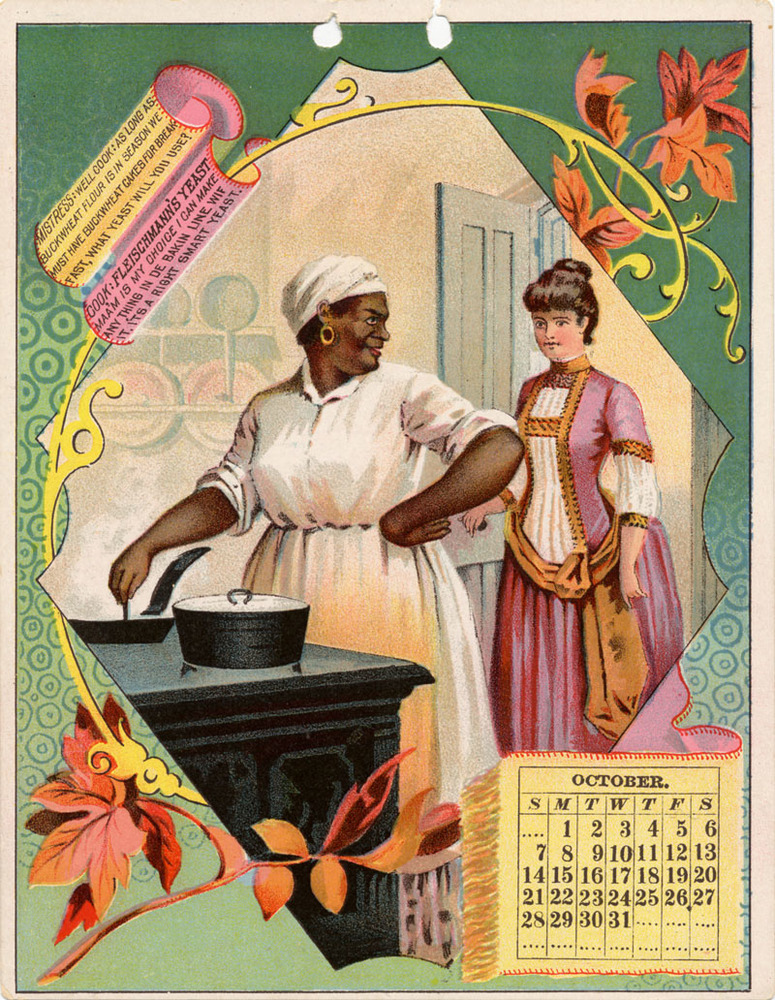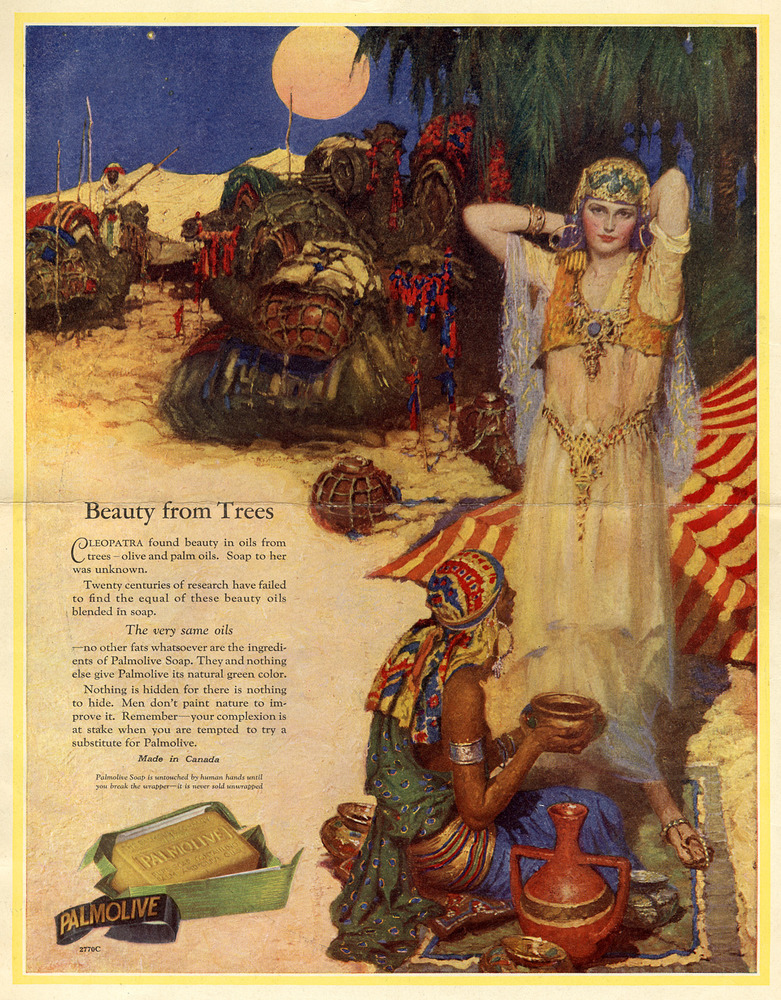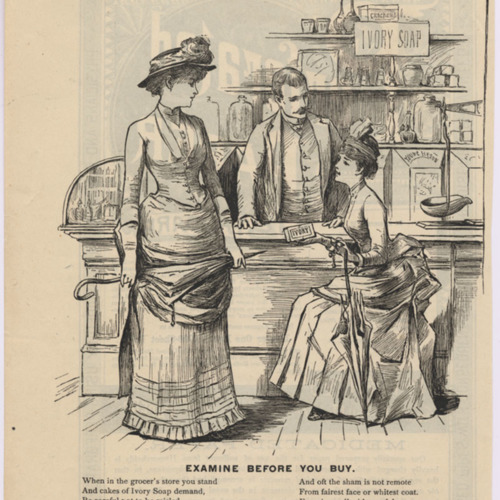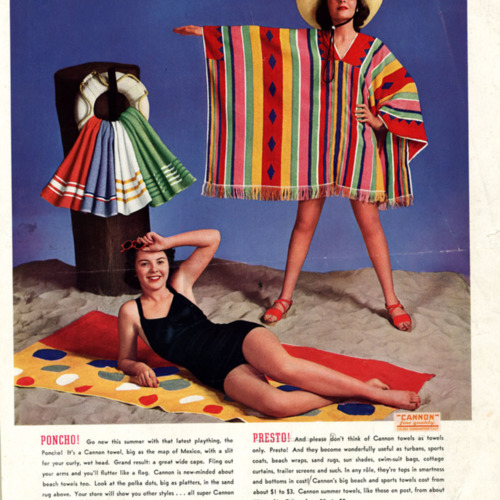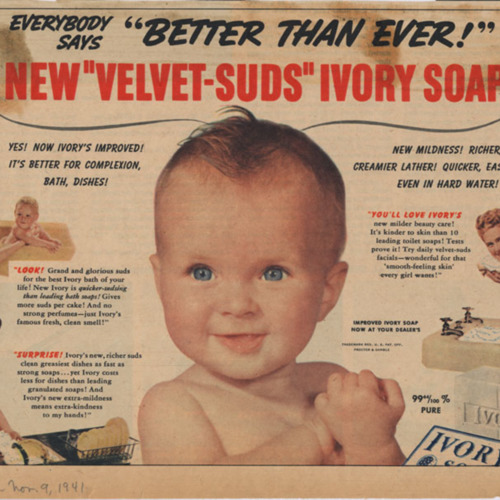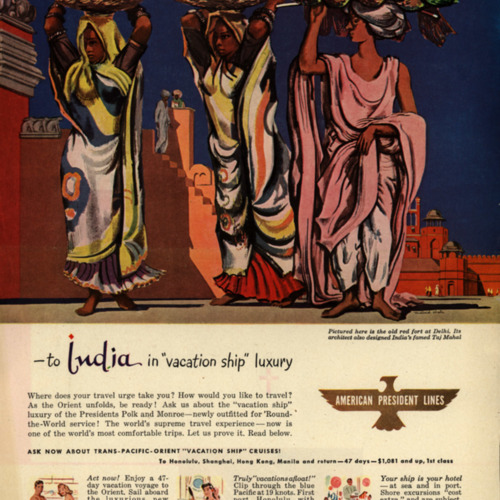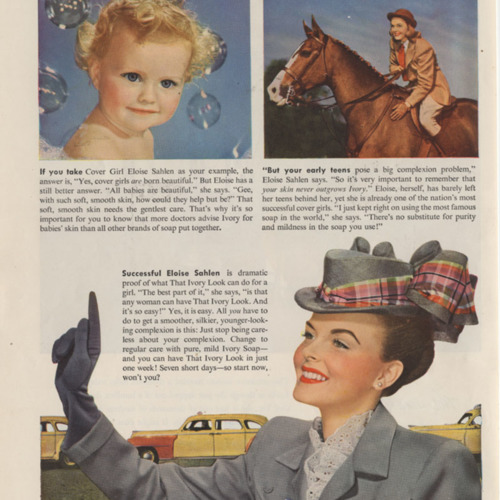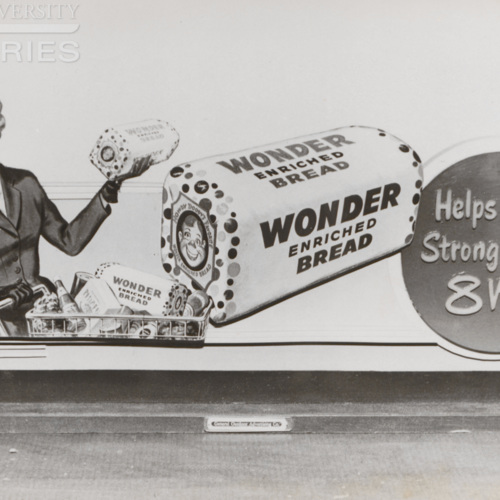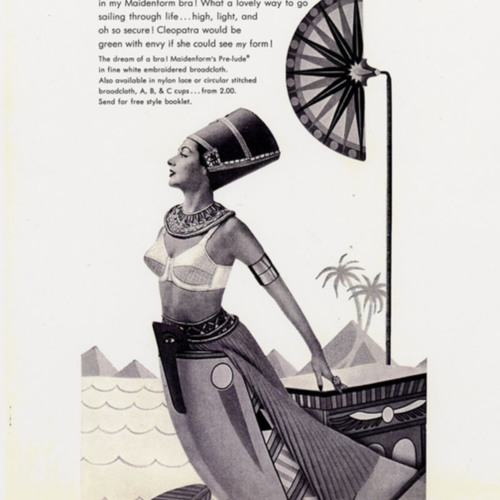Trade Cards and Womanhood
Depictions of women in late 19th century trade cards emphasized white women’s gentility and refinement through Anglo-Saxon physiognomy, proper hairstyles, and fashionable clothing. Often ads would show such ladies talking with their African American cooks or Irish maids. Interestingly, while the lady oversaw the running of her household, often the domestic worker ‘instructed’ the lady of the household on the best product to purchase— in effect, the underling speaking for the company. An 1888 advertising calendar reported this kitchen conversation:
Mistress: Well cook, as long as buckwheat flour is in season we must have buckwheat cakes for breakfast. What yeast will you use?
Cook: Fleischmann's yeast ma'am is my choice. I can make anything in de bakin line wif it. It's a right smart yeast.
Using familiar visual stereotypes, such advertising underscored class divisions and racial/ethnic hierarchies.
At the same time, advertisers drew upon foreign and exotic images to tie American women to styles and practices that would encourage new forms of consumption. This was common in advertising for personal grooming and beauty products; Palmolive ads, for example, featured scenes of Cleopatra to underscore the long lineage of women’s beauty culture: Here Cleopatra was depicted as a white woman, attended by a dark-skinned servant.
Other ads illustrated national dress and ethnic customs from around the world. “How to Ask for a Cup of Coffee in 32 Languages” is an example of such advertising. The ad’s armchair tourism fostered a sense of cosmopolitanism among American women, even as it it simplified the diversity of nations and peoples into visual “types.”
Related Advertisements:
